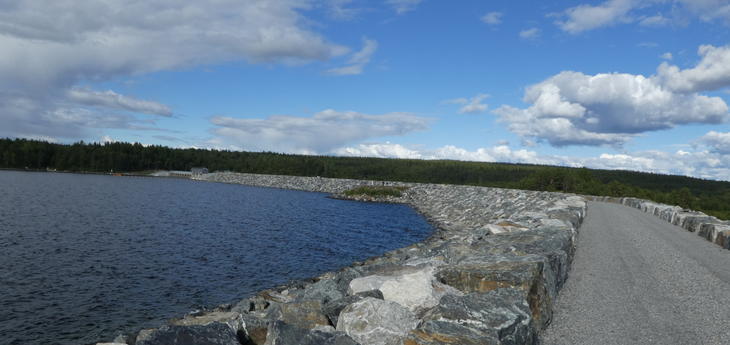Tisleifjord

The association Foreningen til Bægnavasdragets Regulering (FBR) has modified and reinforced the rock-fill dam at Tislefjord during the period from spring 2013 to autumn 2014. Skagerak Kraft was involved in the modification work via its ownership interest in Åbjøra and Bagn power plants.
The dam at Tisleifjord was built in 1948–50 and consists of a rock-fill part and a concrete part. New official requirements for rock-fill dams meant that this part had to be reinforced. The concrete part of the dam was rehabilitated to repair damage to the concrete that has arisen over its 60-year life.
After the modification, the rock-fill dam became 2.6 metres higher. The height of the concrete part is unchanged. The content of the reservoir, highest regulated water level (HRV) and lowest regulated water level (LRV) remained unchanged after the modification. Vegetation on the downstream face of the dam was removed. The dam was also lined, meaning that every stone is stacked and ‘locked’ in a special pattern. The road that previously ran on top of the dam was moved and the new road now runs over a bridge over Tisleia lake downstream of the dam. The masses for the dam construction were obtained from an existing quarry by Fjerdingsbekken stream in Gol.
New power plant in the dam
In connection with the work on the dam, Skagerak Kraft AS built a new small-scale power plant adjacent to the dam. Tisleifjord Power Plant uses some of the water that was previously released through the drainage gates. The output of the power plant is around 1.6 MW with production around 6.0 GWh/year, which approximately corresponds to the power consumption of 300 households.